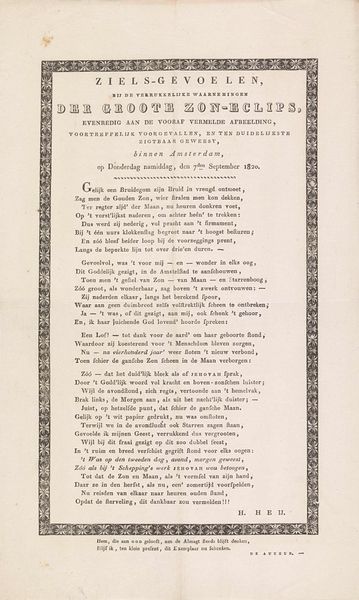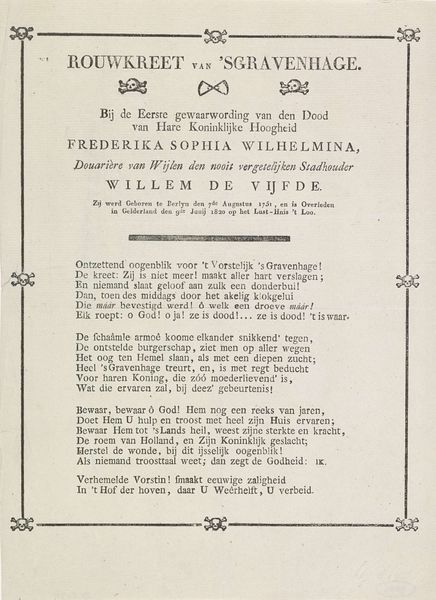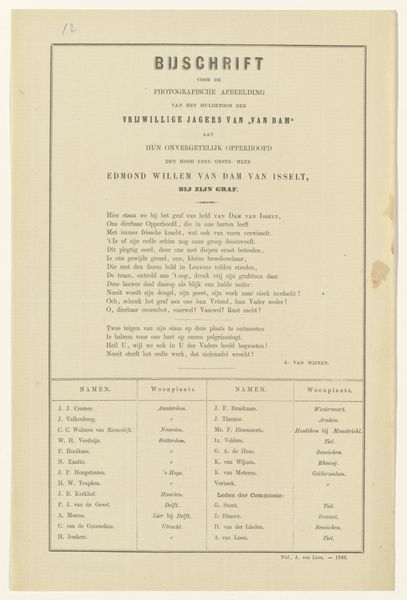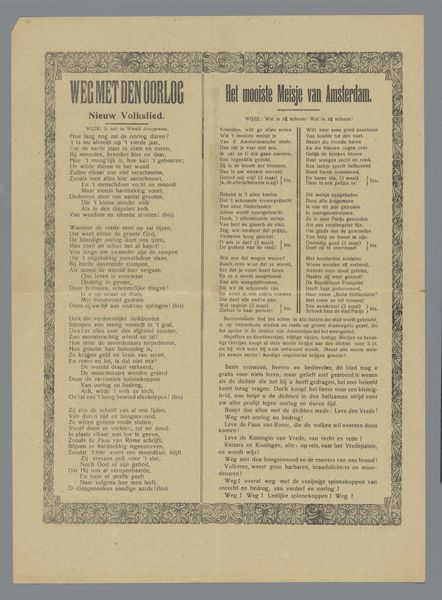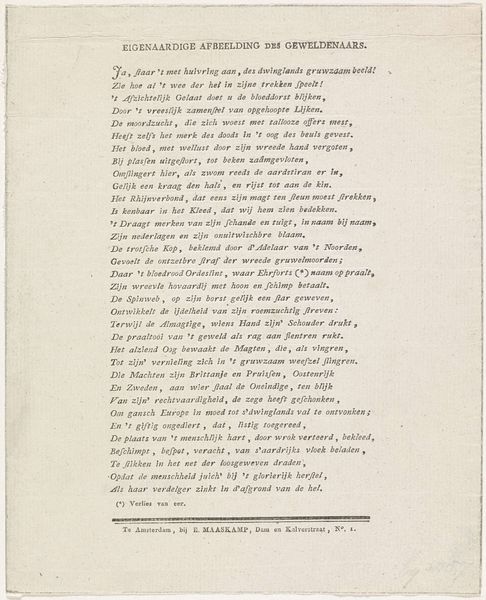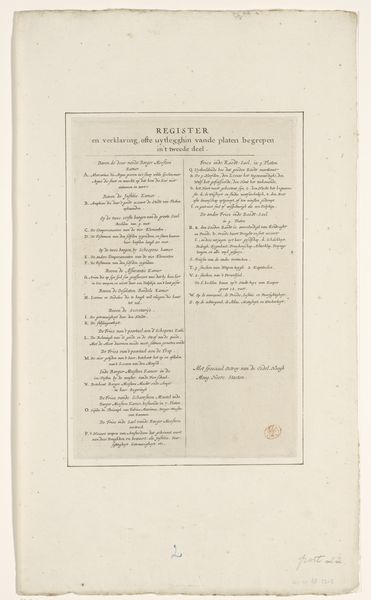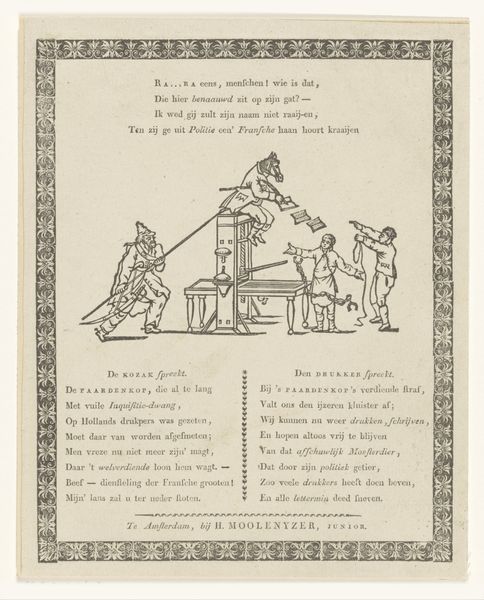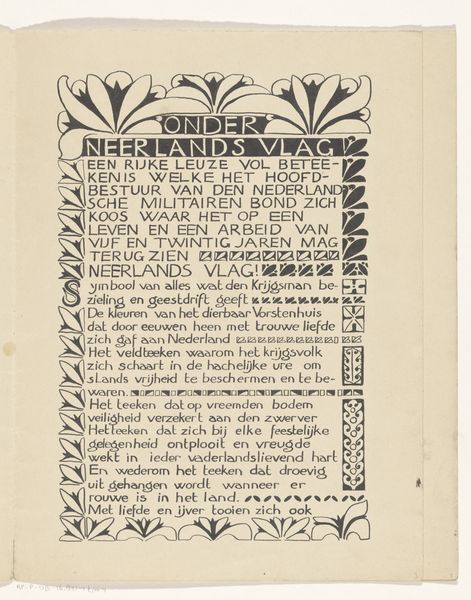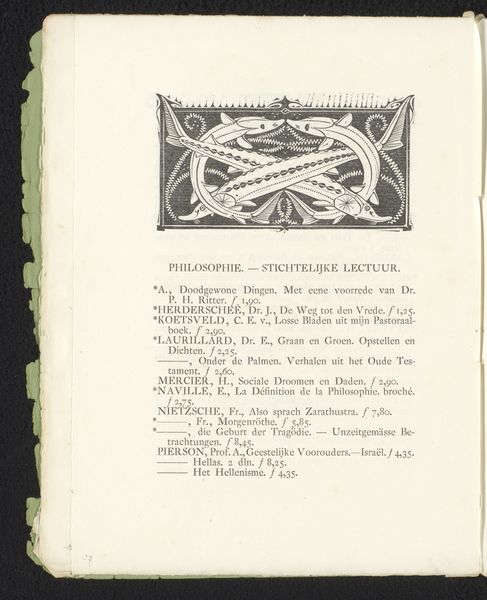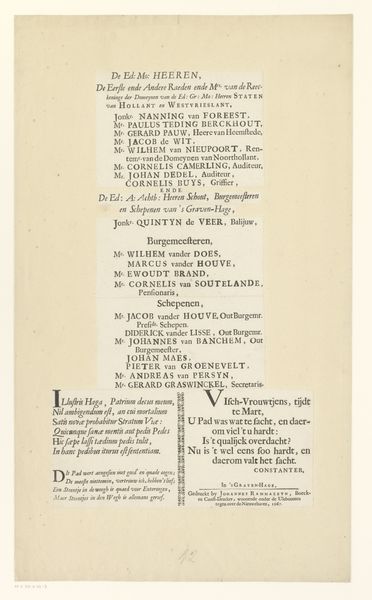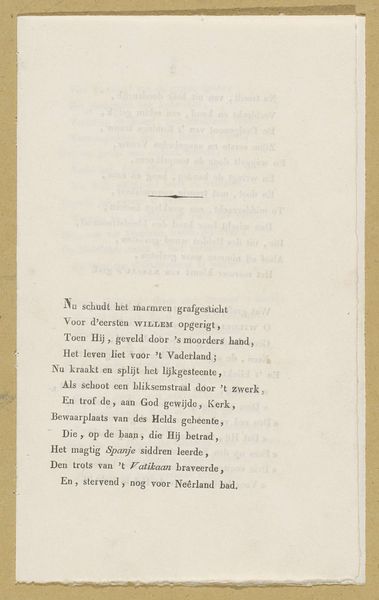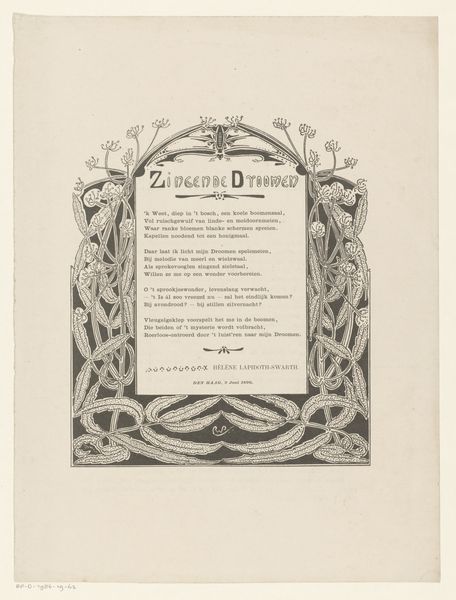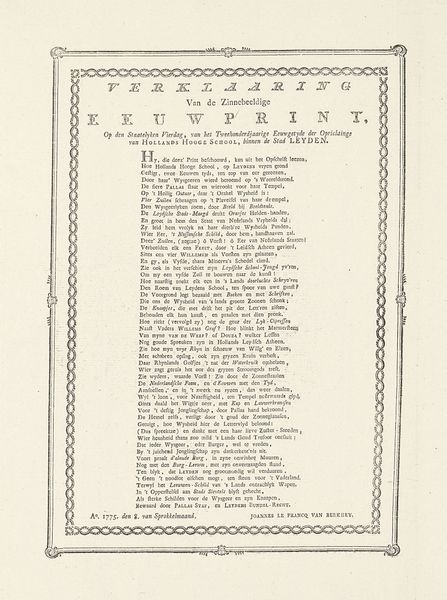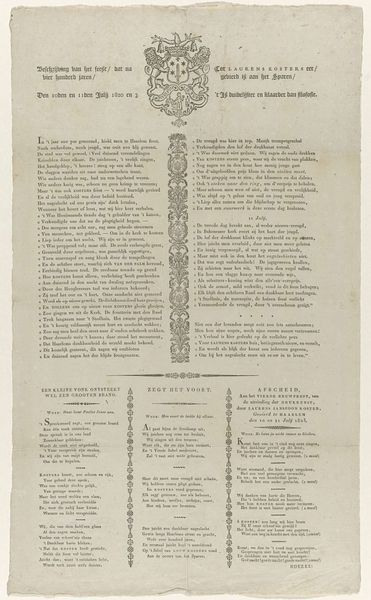
print, textile, paper, typography
#
neoclacissism
# print
#
textile
#
paper
#
typography
Dimensions: height 340 mm, width 210 mm
Copyright: Rijks Museum: Open Domain
Curator: We are standing before “Vers geschreven door J.B.F. van Gogh voor zijn executie, 1778,” a print on paper and textile dating back to 1778. The text is prominent, featuring decorative borders and a central poem in Dutch. Editor: My first impression is stark and mournful, a grim reminder of mortality. The typography lends a certain gravitas. Curator: Indeed. The piece’s power lies in its association with a condemned individual facing execution. "Written in the Chamber of Mourning," the title proclaims, instantly setting a tragic, socially loaded stage. What significance do you find in the fact that van Gogh names this poem in relation to a Treurkamer – which is to say, Chamber of Mourning? Editor: I am drawn to the physical properties—the paper and textile which are used to distribute what appears to be an otherwise individualized expression. And what does it mean for the production and dissemination of knowledge if the medium is impermanent – paper that may fade, fabric that may tear? There’s an inherent tension there, which points to material processes that amplify the class disparities, and precarity of, authorship. Curator: Absolutely, the intersection of text and textile also invokes the socio-political realities surrounding the artwork’s very means of production. Let's consider the possible gender implications too. One question I have relates to the intersection between author, printer and “Hoer,” or, the ‘Whore’ spoken of at length in the poem – Editor: Right, it appears the "Hoer," is portrayed as deceitful: "...though only lies inwardly laughed" is a telling line, and highlights a dynamic in which one set of subjects may access the domain of Reason. Curator: Van Gogh uses classical references to reinforce conventional standards: 'Neither Samson, Hercules, may sway,' as one reads, in opposition to the lies of the “Hoer.” So the poem suggests some tension. I notice you lingering over by that final printed flourish! Editor: The details surrounding the printer matter here! Note: "By Johannes Seggeren and Son, Bookmakers in de Gravestraat” This suggests that social institutions and power are linked not only through the act of producing text but are, literally and concretely, located at specific sites of labor. Curator: I find the fusion of personal narrative and historical moment profoundly stirring. It encapsulates the personal suffering inflicted on the figure in question and society’s complex social power dynamics that continue to impact people. Editor: Yes, it really highlights the layers of production—social, textual, material—in this seemingly simple document of despair.
Comments
No comments
Be the first to comment and join the conversation on the ultimate creative platform.
